



In addition to facial expression, the figure is an important tool for communicating feelings to the reader; using it will make your manga more successful. The common problems beginners have are getting the proportions and shapes of the major body parts correct. The legs and neck end up way too long, for example, or the hips and chest are much too skinny. But by starting with a basic construction of the female figure, you can easily avoid these problems. Once you get this down, you can move on to the more advanced poses and costumes that help your characters convey the emotion of the story.
In the construction drawing, the chest and hip areas are sketched as ovals, with the chest being the larger of the two. Drawing these ovals first, and the frame of the body around them second, establishes the correct proportions at the outset. The horizontal line at the top of the chest (the collarbone) creates a strong visual plane. It’s often drawn at an angle, which makes the pose more dramatic. The line of the hips tilts in the opposite direction than the collarbone.
When down, the relaxed arm will hang at mid-thigh level. The legs are approximately 25 percent longer than the arms.




When the arms are raised above the head, the collarbones bend at the pit of the neck, forming a wide V. The breasts lift and flatten. The outer breast tissue wraps around the deltoid (the shoulder muscle), as indicated on the detail.
To make sure the weight is distributed correctly, you need to find the center of balance. To do this, draw a straight line from the pit of the neck to the ground. In this case, her right heel is the center of balance. And since more of her body mass appears to the left of the equilibrium line, she must lean slightly back to the right to maintain balance.


The outer upper breast area wraps around the inner deltoid (shoulder muscle).




When you turn the body in a 3/4 view (halfway between a front and a side view), the center line becomes all-important. Serving the same function as it does when you draw the head, the center line runs vertically through the center of the body. It’s not used to indicate balance but is a guideline to divide the body equally in half. When the body is turned 3/4 of the way around, the halfway point (and, therefore, the center line) will appear to be 3/4 of the way over. In addition to aiding the artist in visualizing the body correctly, the center line helps the artist draw the costume in the correct proportions. Belt buckles, zippers, and buttons often appear down the middle of the body, so they naturally fall on the center line.
In addition, artists use circles—spheres, really (because they’re envisioned as three-dimensional)—to represent the various joints of the body. This serves as a reminder that the joints have mass. Many beginners draw joints that are far too thin, so this is a good technique to use.


Although the center line appears to travel through the near breast in this angle, it doesn’t; rather, everything has just been drawn see-through to show the construction, and in this pose, the near breast overlaps the center line. It’s really in front of it.






When the body is turned, perspective comes into play. The near leg will, therefore, appear longer than the far one.
In the side view, the chest tilts up slightly while the hips tilt down slightly, as indicated by the horizontal guidelines. These two forces combine to create an attractive curve in the small of her back. Also observe the shoulder socket: it should fall within the oval of the chest area. And here’s one more item to keep in mind: even though it’s only slightly noticeable, the far foot must be placed a tiny bit higher than the near foot, due to the effects of perspective (when things that are farther away from us appear smaller than things that are closer to us).


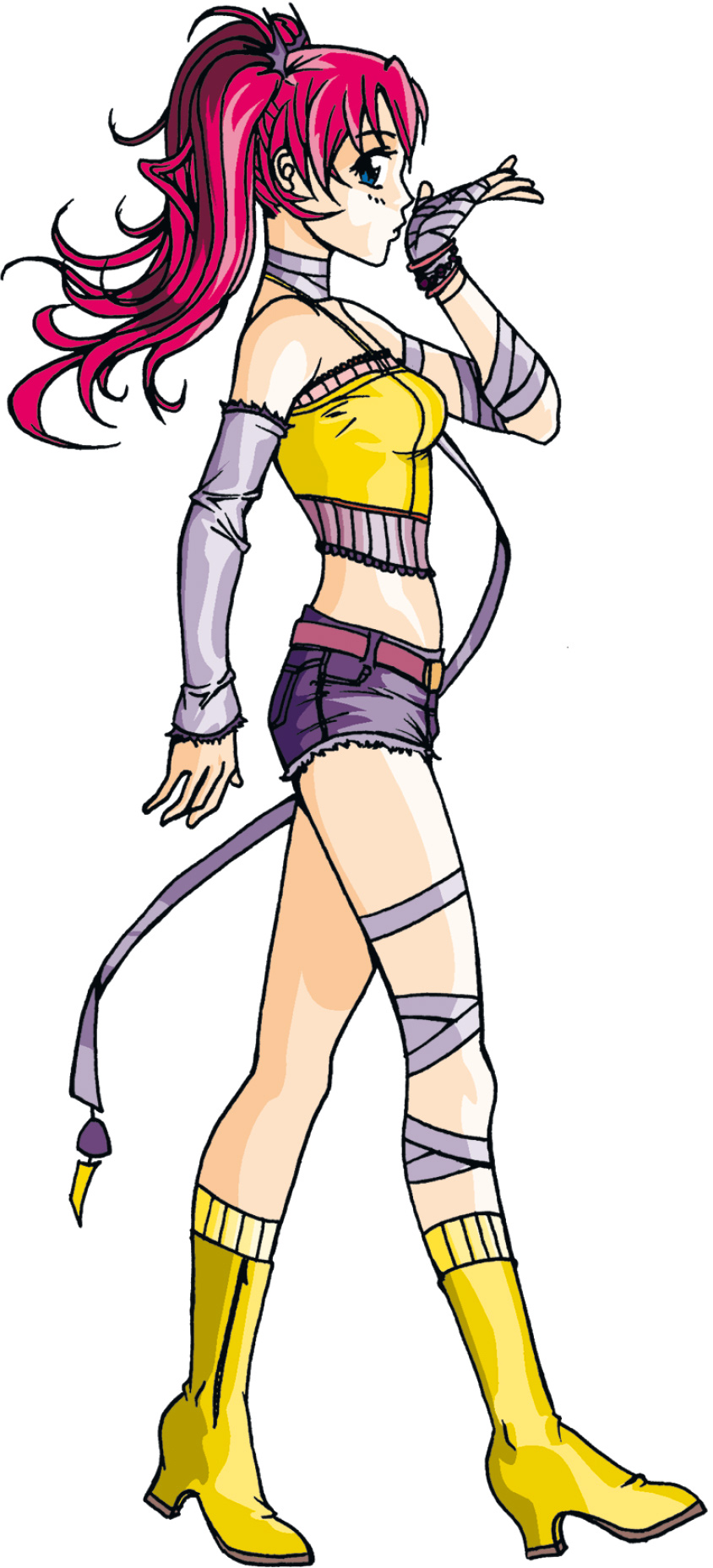



Since most of her body is in front of the balance line, she leans back to maintain balance.


A pose tends to look more natural if the weight of the figure is distributed unevenly. The leg that carries most of the weight is the straight one. The relaxed leg shifts away from the body, with the knee slightly bent, sometimes barely touching the ground with the toes. As the relaxed leg moves away from the center of the body, it pulls some of the body in its direction. You can see this by looking at the line of the spine, which pulls away from the central balance line in the direction of the relaxed leg.


Less of the neck is visible in the back view than in the front view. That’s because the trapezius muscle (which rises from the shoulders to the base of the neck) obscures it. In the front view, there is no similar muscle to obscure the neck.


WEIGHT ON LEFT LEG
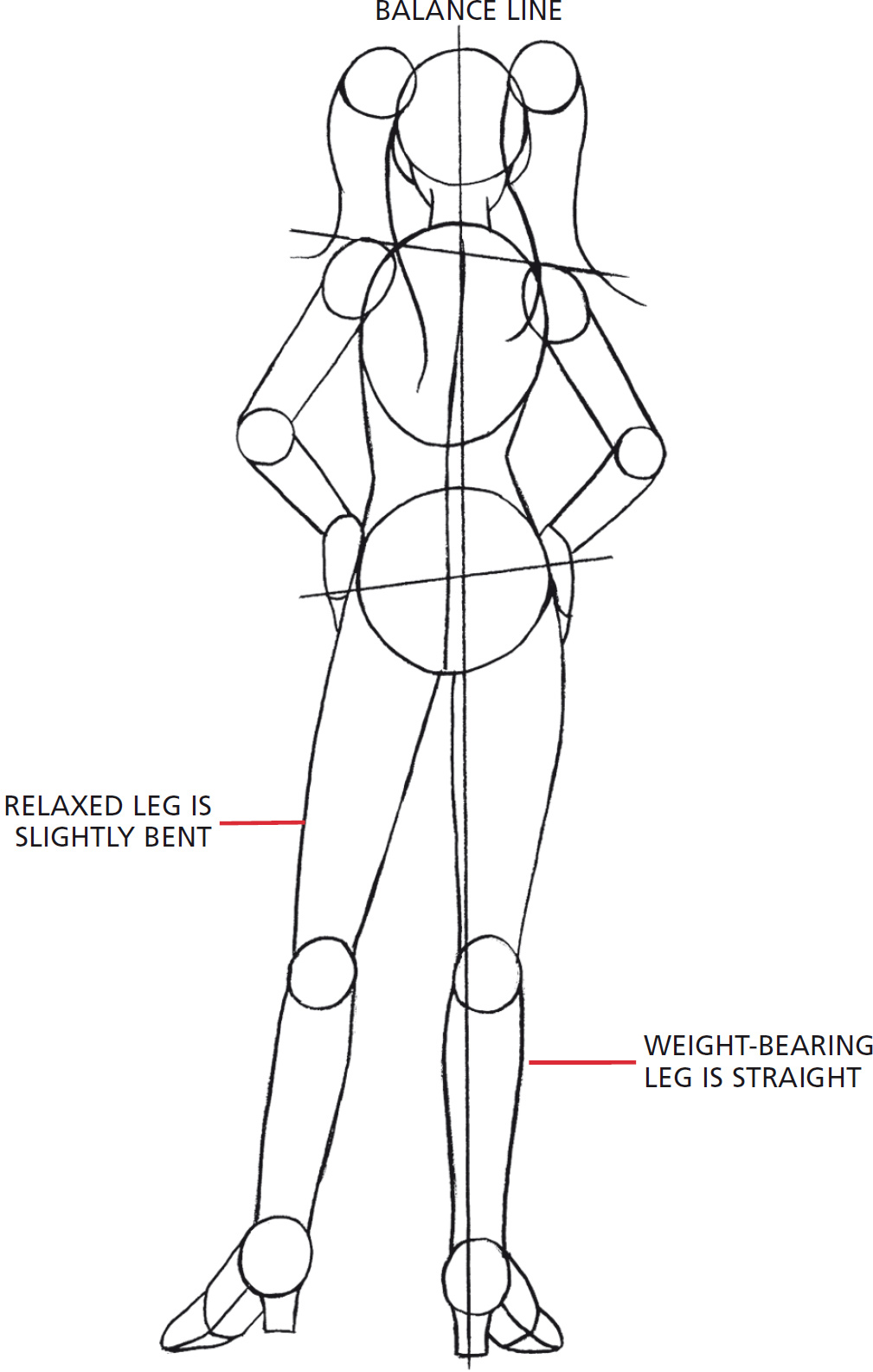



WEIGHT ON RIGHT LEG
You can’t draw your characters with their hands in their pockets or behind their backs and not expect everyone to realize that you’re hiding your inadequacies. Hey, I understand the frustration: you’ve drawn a good character, and you’re afraid you might ruin it if you show the hands. Be brave! You’re probably a lot closer to drawing a convincing hand than you realize. Here are some tips that will get you drawing hands like a pro.


Pay attention to the joints in the fingers. Each finger has three joints.


Each finger is a different length, but the pinky is a real shrimp.
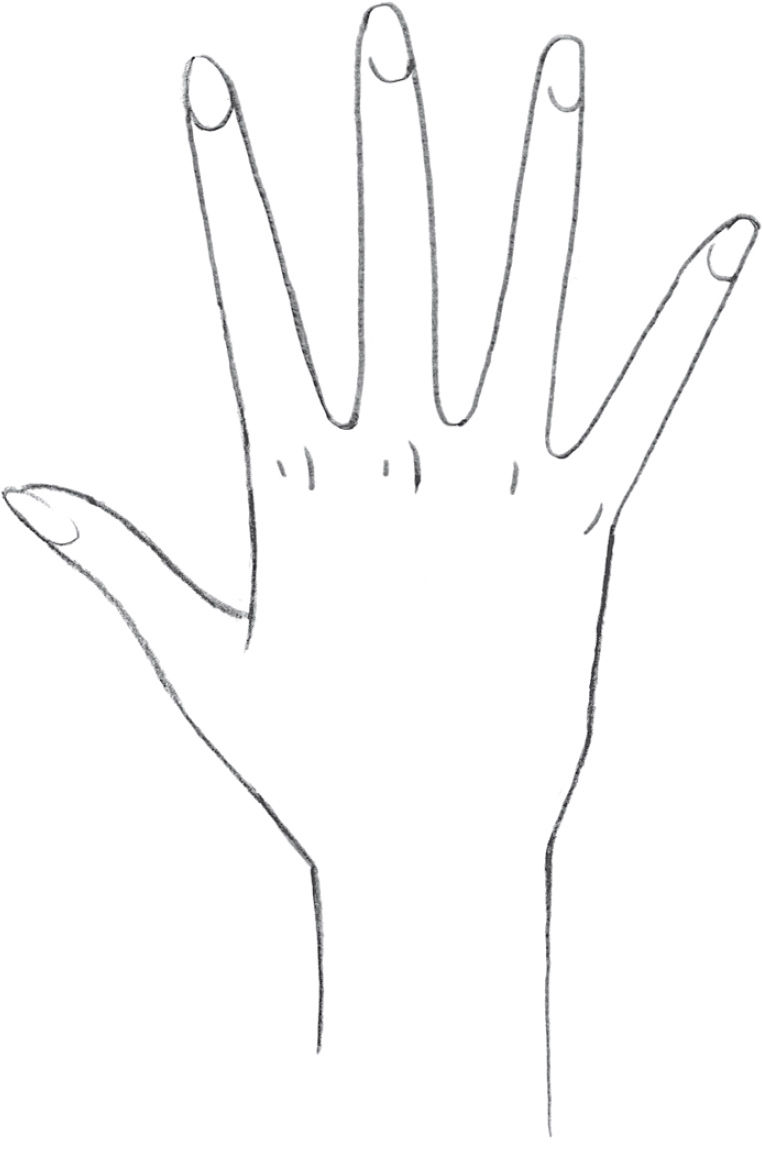

When having trouble, study your own hand in the pose you are trying to draw. But, if you’re a guy, keep in mind that a woman’s hand is narrower than yours.


The thumb has a moveable joint at its base, which is pronounced. This is what gives the thumb its width.






FLAT


ROUND


POINTED


TRIMMED
You can draw hands in all sorts of expressive poses, even using extreme foreshortening (shown here). You can also liven up your hands by adding rings, bracelets, hand guards, gloves, gold chains, and even mysterious tattoos.
































A woman’s foot will always appear more attractive when the heel is lifted off the ground. This holds true whether your character is wearing stiletto shoes or space-fighter-pilot boots. The elevated heel causes the bridge of the foot to slope downward, elongating the look of the leg and creating a smoothly tapered appearance.


Feet in high heels make the legs look longer.


Soles of high-heeled shoes should be clearly visible in rear view.








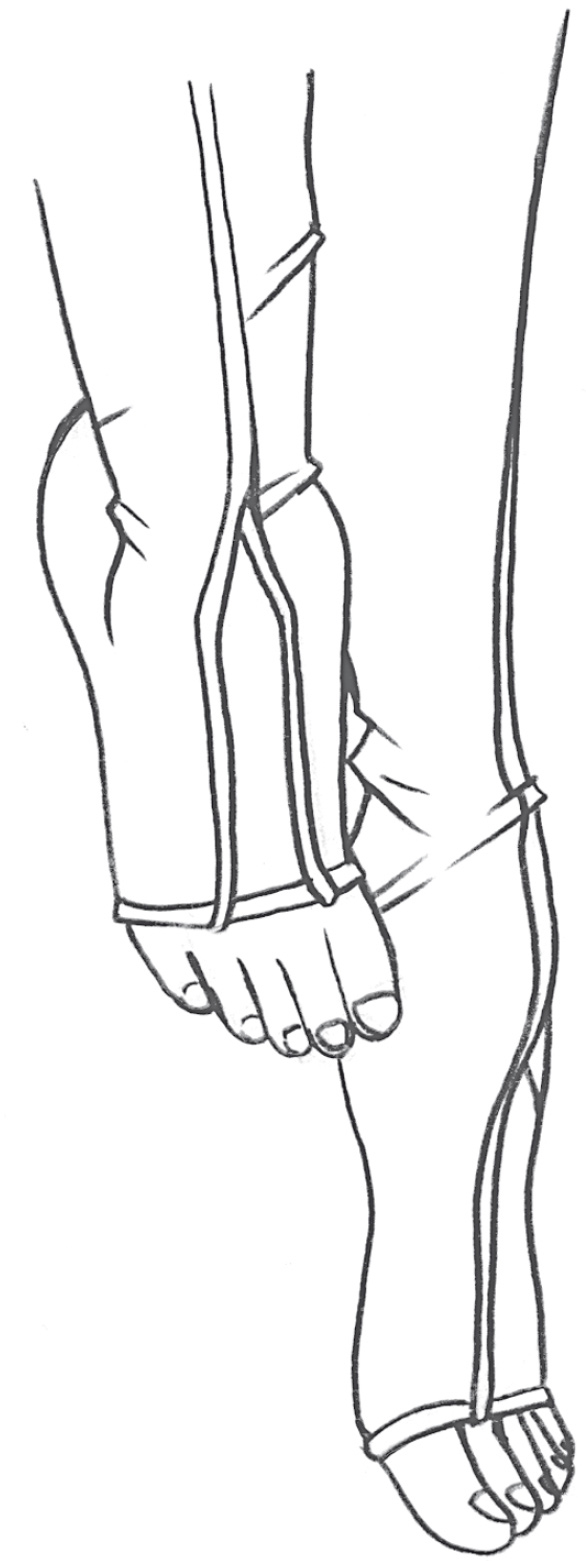





Let’s put some costumes together with poses so that the personalities of the characters come through. This is a playful pose that works well with this attractive character, who wears stylish, casual clothing. To create a playful look, keep the figure light on her feet, with a bounce to her walk.
Broken down into its elements, this lively and appealing pose is actually quite easy to draw. It might not seem that way if you only look at the finished drawing, but if you examine the first construction step, you can see how the pose breaks down. That’s what you should be fixing your mind on. Most of the important decisions are made in the first construction step. With that locked in, you’re actually more than halfway done, and everything else falls into place. By making sure you begin at the first step, you’re starting to draw correctly; most people start at the final stage and, consequently, never get it right and have no clue why.




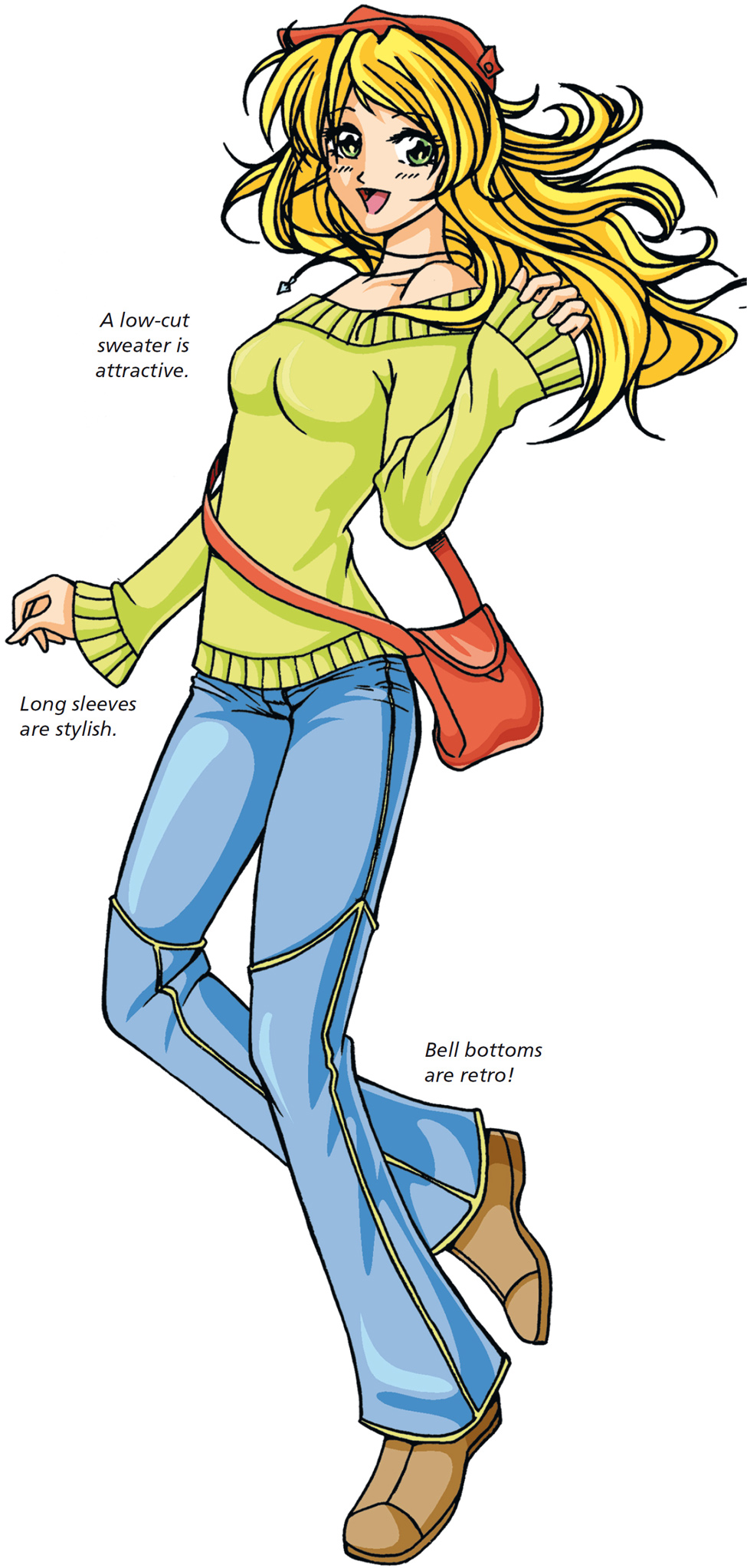

This is a 3/4 pose, so look back at the 3/4 figure on this page if you feel you need a quick refresher.
To get a figure that conveys that sultry look, draw long arms and legs. Give her a thin, long waist area, and separate the breasts across the chest. Also, widen the shoulders and show a clearly defined collarbone; wide shoulders on thin, sexy women always create an appealing look.


Lengthen the waist to get lots of space between the rib cage and the hips.
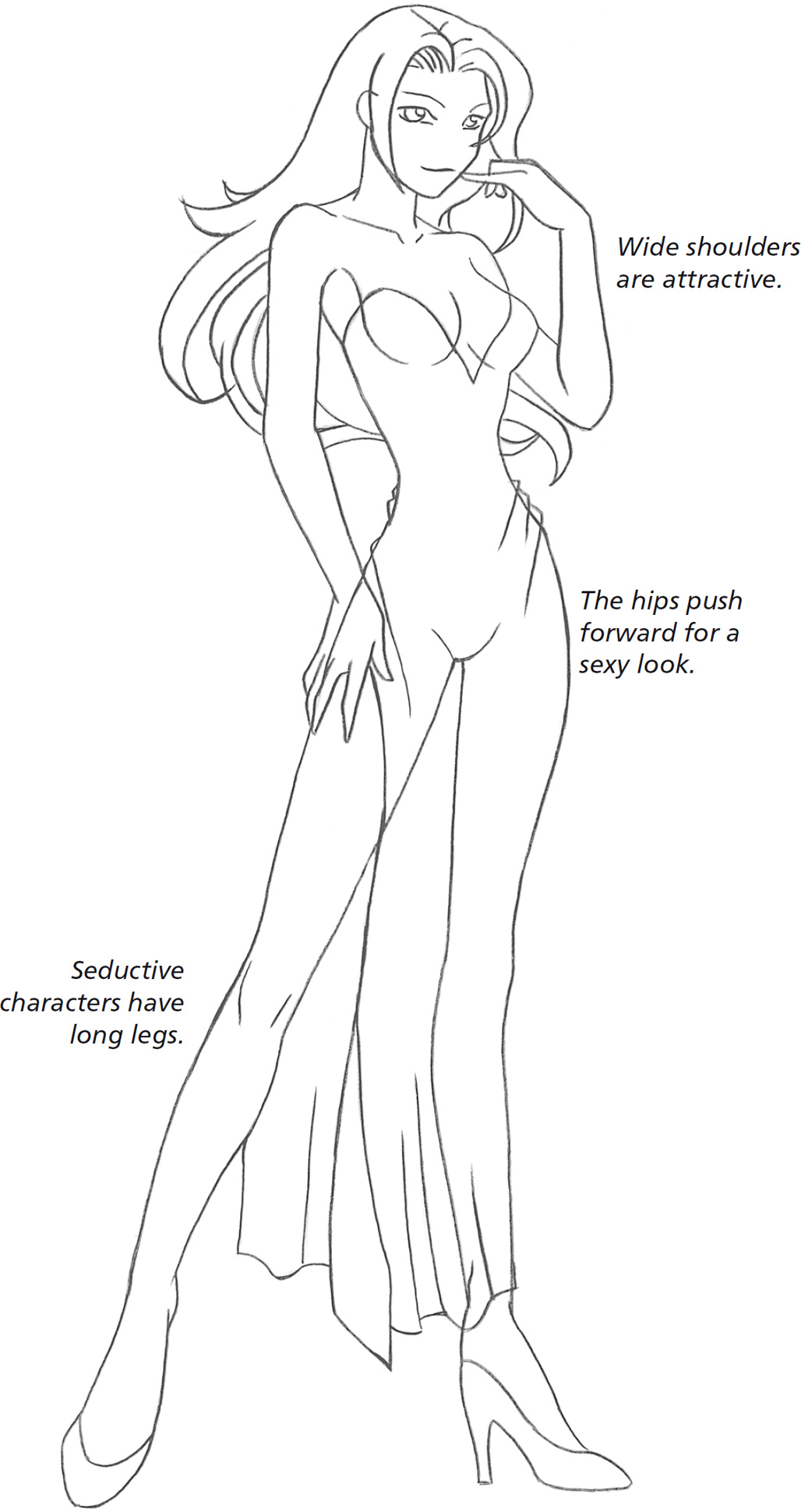



You definitely can’t wear this to your next job interview, but for bishoujo characters, it’s sensational! Sometimes, the clothes are so dramatic that you should let them do most of the work. For example, this character’s pose is subdued to give the viewer a chance to get a good look at her flashy costume. With the long coat and the belt flapping in the wind, the outfit provides all the movement the figure needs.




In keeping with her character, this figure is more athletic and rugged than the previous examples. She’s an expert with the longbow. A wide stance is used to add stability. Archers are an important part of the Fantasy genre. They dress as if they were from the medieval peasant class; in other words, no armor, which was a trapping of the elite classes back then.
Even though she has a warrior’s heart, she should still have attractive features, such as dark eyelashes, a petite mouth and nose, and dramatic hair.




In comics, characters communicate through words in speech balloons. But if words were enough, artists wouldn’t need to draw facial expressions. Likewise, if facial expressions alone did the trick, there would be no need for dynamic poses. However the truth is that, we need the whole shebang: the words, facial expressions, and expressive posture.
Posture reflects the inner turmoil of a character. Positive emotions (such as joy), as well as forceful emotions (such as anger), require postures in which the chest is held out. Negative emotions (such as cowardice, sneakiness, and sadness) require postures with a sunken chest. Depending on the emotion, the shoulders tense up or droop, the head is either held high or low, and the spine stiffens or bends. Take a look at some of the ways the body typically conveys mood.


I’ll call this the standing-at-attention pose. Nothing is going on here; it’s completely neutral. The body is not expressing any emotion.


With only two small changes—a hanging head and drooping shoulders—the character’s emotions begin to reveal themselves.
SNOBBY
Lifting the chin and stiffening the spine create a character with an I’m-better-than-you-and-I-know-it attitude.


The shoulders shift forward and the head tilts down, exactly like the Unhappy pose—but in this variation the head is held in the hands.
The spine arches back, with the chest out. The head tilts back.


Tensed, raised shoulders and a stiffened spine convey anger.
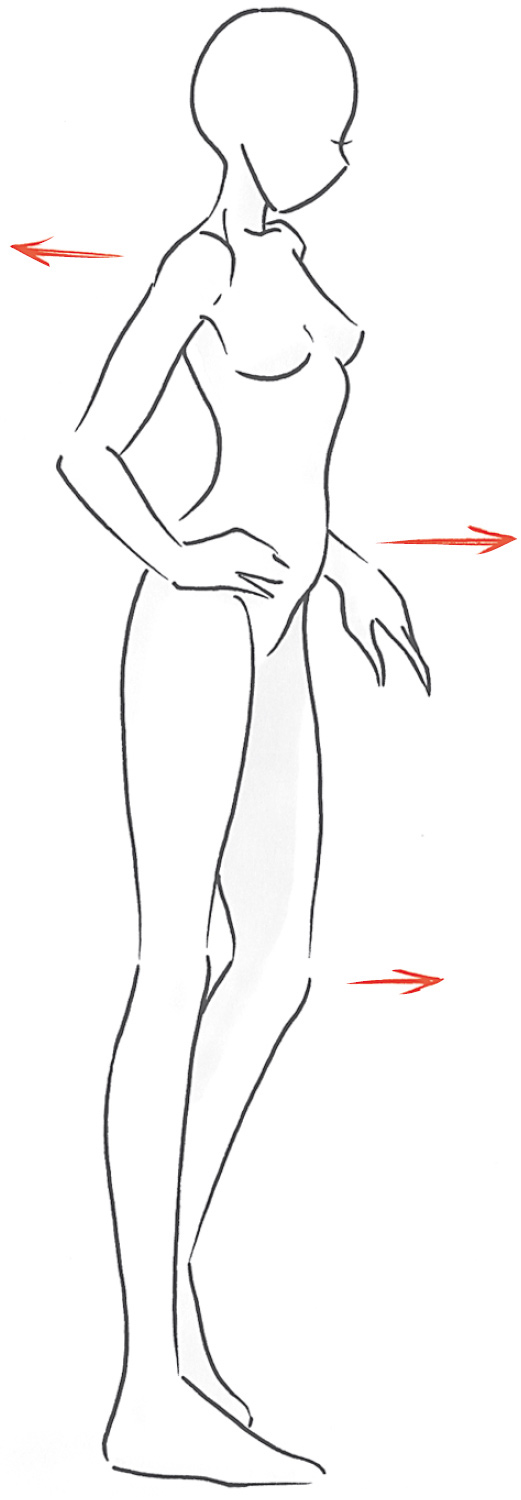

One shoulder is pulled back, and the other is pushed forward. One leg is back, the other is forward. The hips tilt forward, too.
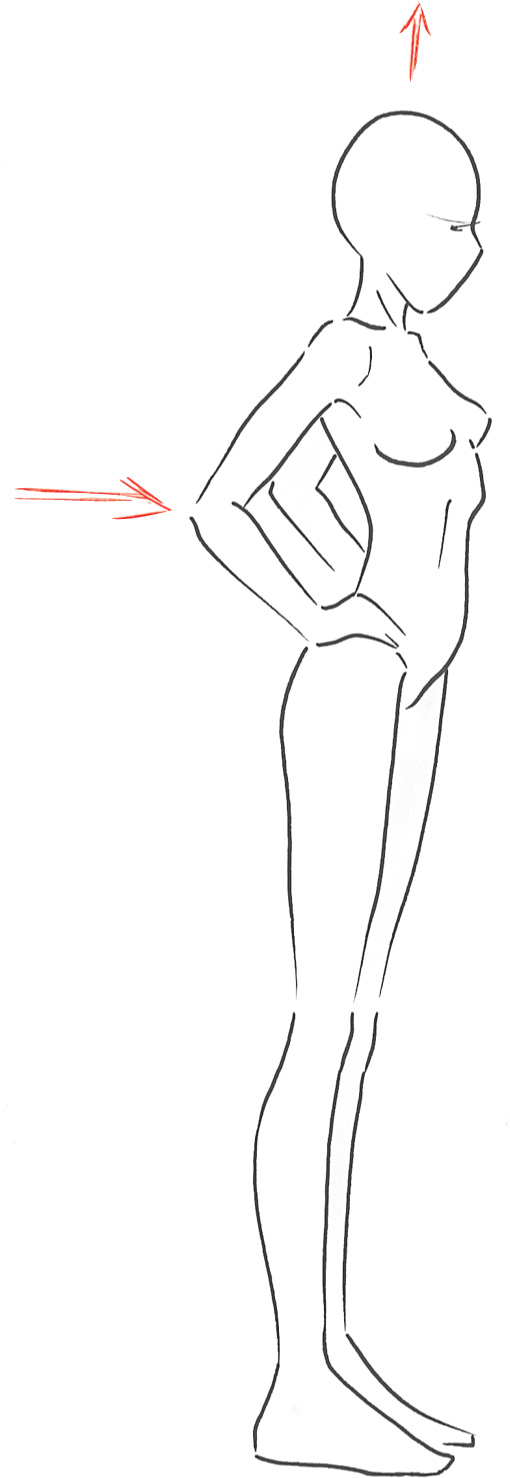

The arms are akimbo (which always indicates some degree of anger or upset) and the back is arched.


IMPATIENT VARIATION
The back is still arched but the arms are now folded in front of the chest.


Both shoulders pull way back, the chest sticks out defiantly, and one leg is out in front.
Now let’s go one step further and vary the angles of the poses on finished figures. You’ll see that despite the more elaborate rendering, the attitude reads just as clearly as it did before, because it’s based on the body posture, not on the smaller details. The facial expressions assist the body language, making a strong statement even stronger.


HAPPY AND PLAYFUL
An arched spine combines with a playful twist of one ponytail.
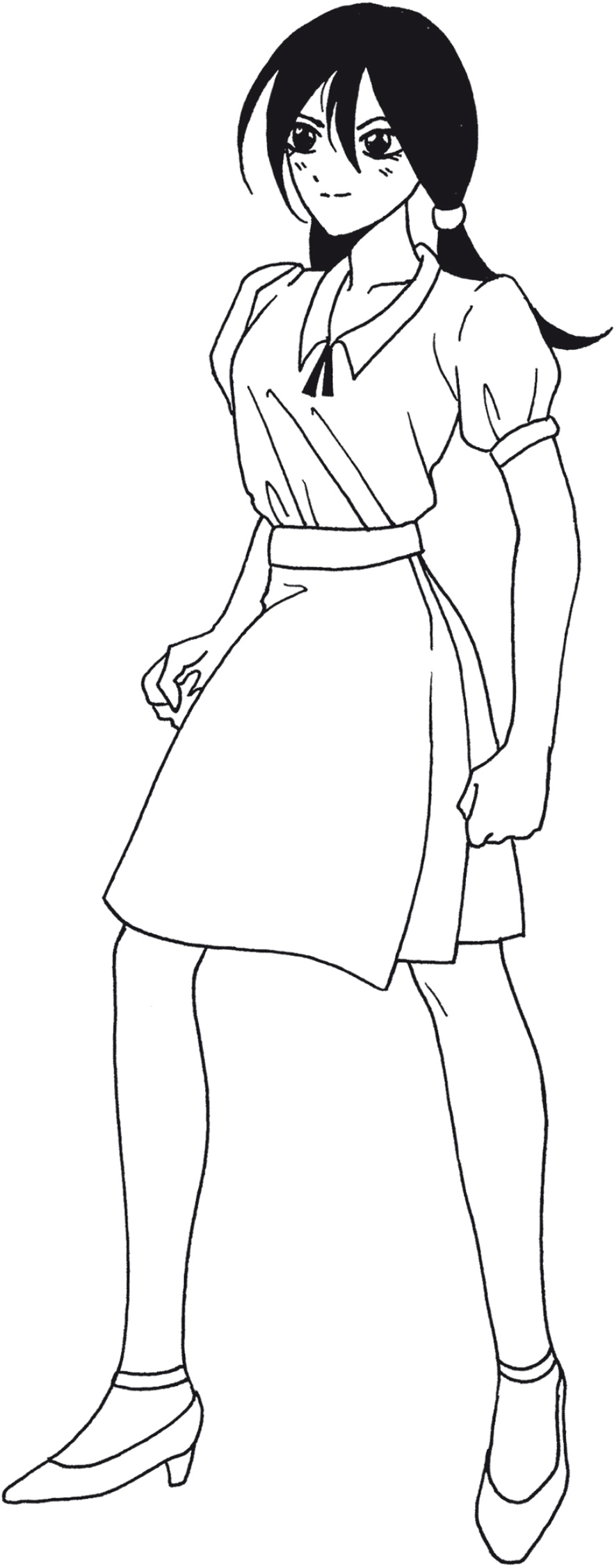

EAGER
This is similar to the Fighting Mad pose on this page, but less intense.


The knees knock together in a sign of weakness, the chest is sunken, and the shoulders rise nervously.
The head is held high, the chest is out, and the arms are akimbo.


This pose exhibits a sunken chest, shoulders that droop, and feet that turn slightly inward (always a sign of weakness).


The head and shoulders slump, and the body bends forward in a sign of sapped strength.
There are many ways to portray an emotion through body language. But ultimately, the most important tool you have is your own gut instinct. After you rough out a drawing, pause a moment to see whether it conveys the emotion you’re trying to portray. If it doesn’t, then you’ve still got work to do. But if you can look at your drawing and say, “Yeah, she looks tired [or happy or in love or whatever emotion you’re after],” then you’ve nailed it and you can proceed. It’s your job to be the final arbiter of what works and what doesn’t. This section contains a few more advanced poses that you can copy exactly as they are for practice or that you can use as a springboard when developing your own original characters.


FLIRTATIOUS
The head tilts down, nesting in the shoulder. This is classic, flirtatious posture.


Sometimes, a simple action will read more clearly than an overly detailed pose. Instead of gritting her teeth and clenching her fists, all this character has to do is check her wristwatch for us to know what’s happening.


Clenched and half-clenched fists telegraph emotions clearly.
Sometimes you’ll want to draw an angel, a princess, or a faerie whose mere presence is a harbinger of good things. These characters can appear out of nowhere, like apparitions, to guide characters to safety. The body language is straightforward and open, never cryptic. She’s usually portrayed, at least in the establishing shot, in a front view with open arms and a relaxed posture.


Having a character hug herself is a very effective way to communicate, through body language, the fact the character feels entirely alone in the world.
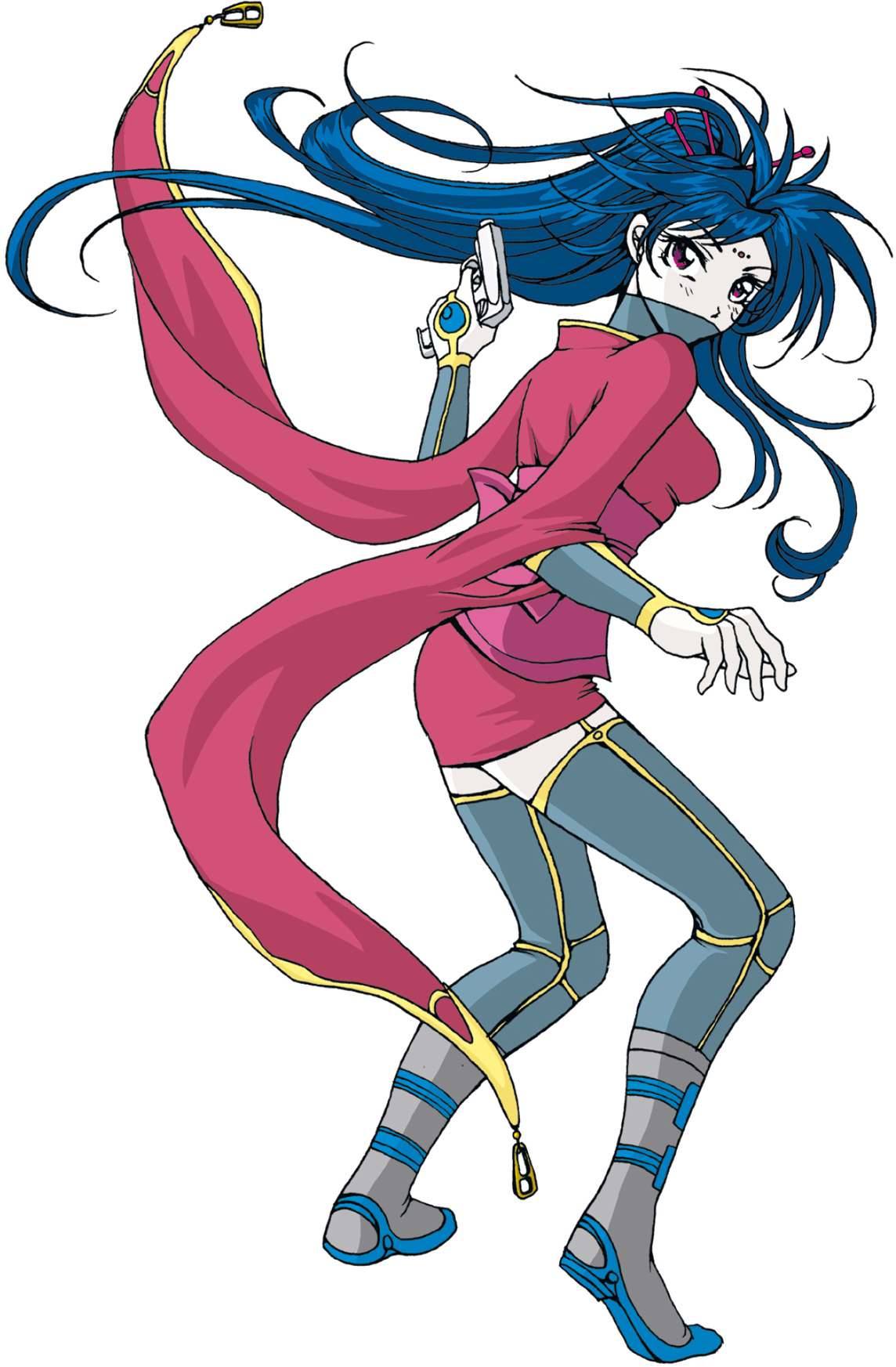

When your character is tracking down a criminal, for example, how would she go about doing it? Would she hold her gun down by her side or up at the ready? Would she be flat-footed or up on her toes? Would she look straight ahead, or would she flash a look over her shoulder so that no one could sneak up on her?
The head tilt and the hand near the head are surefire signs that the character is weighing what to do next.


It’s not enough for her to huff and puff—not if she’s really spent. Her body must also be out of fuel; therefore, her posture is slumped, just like the standing version on this page.


Arms folded across the chest usually mean defiance, but with the head turned backward, it’s a signal to her boyfriend that she’s not buying his story. Her closed eyes help the idea.
Being on hands and knees indicates a total collapse of the will to live. Something very tragic must just have occurred.


Have you ever been so happy that you jumped up and down and shouted, “Yea!” Well, if you did, it looked something like this.


This is a very popular pose for young teenagers in school uniforms and casual clothes. The hands are clasped in front of the body in a modest manner, the knees are touching, and the shoulders are slightly raised. It’s a very closed-in stance, and it reads as petite and polite.
What makes a pose sexy? First of all, a sexy pose is fluid, never stiff. Generally, the legs are placed apart or one leg bends more than the other. This causes the hips to tilt to one side, which is essential for a sexy pose. Don’t position the hips square; they must be tilted unevenly if they are to be attractive. You can also push the hip area forward, which causes the figure to lean back and the breasts to rise up slightly.


Simply moving a leg further to one side dramatically improves a pose. When you do this, it’s not just the legs that are affected. The entire body adjusts, like a set of dominoes falling into place. Look at the line of the hips and shoulders: the hips appear curvier and the shoulders more severely angled.


As one leg bends, the arch in the small of the back increases and the rear end pushes outward, accentuating the curves of the figure more. The upper back also adjusts, leaning back slightly, which in turn causes the breasts to lift slightly.
Comparing these before-and-after examples will give you an idea of what you’re looking for.


ORDINARY
Not much movement going on in the legs.
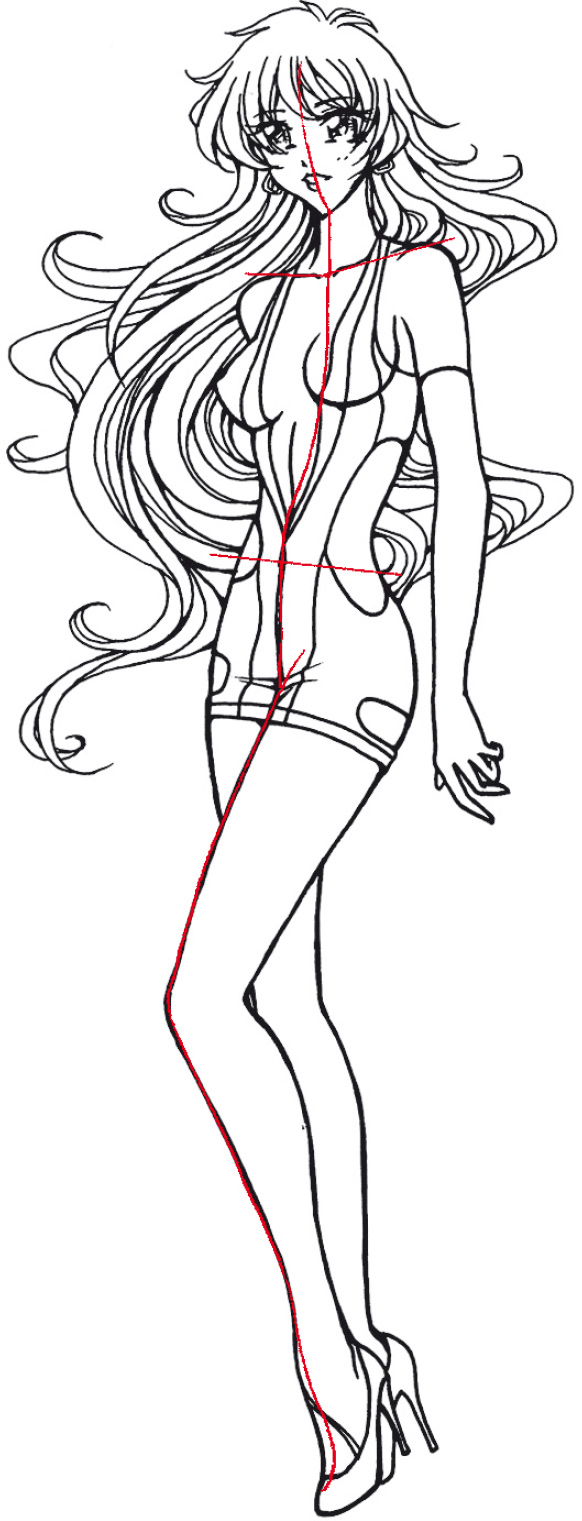

ATTRACTIVE
The bend in the knee is more pronounced, causing the near leg to overlap the rear one. The hips adjust for this motion, accentuating the body’s curves.


ORDINARY
Too symmetrical, lacking movement.


ATTRACTIVE
The hips push to the left and slightly forward, revealing a nice curve to the back. The legs are in a wider stance but are not symmetrical; the right leg has shifted out farther to the side than the left one.